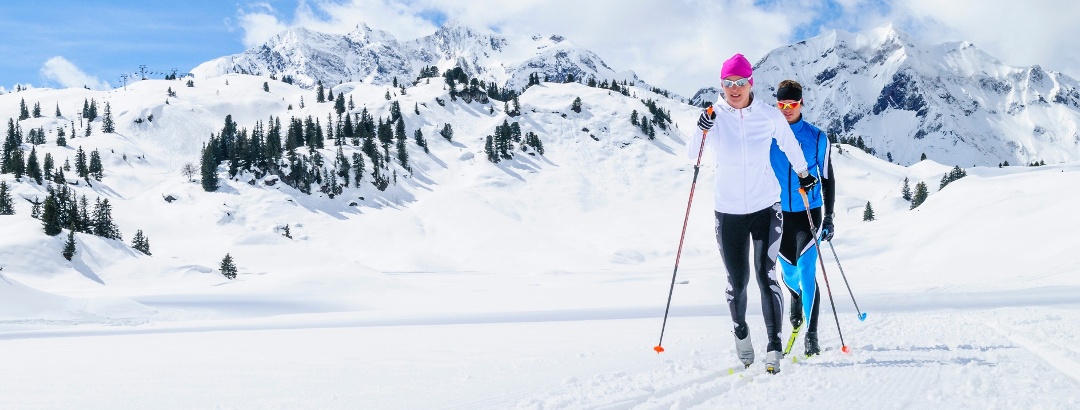Cross-Country Skiing
The sky is blue, the snow glistens and the trail is prepared - it's high time to unpack the cross-country skis. Cross-country skiing is a varied and healthy sport that enjoys great popularity. In this article we have collected a lot of information about cross-country trails, equipment and technique.
The best regions
A sport with a long tradition
From the 1960s onwards, cross-country skiing became more and more popular in Central Europe and more and more cross-country skiing networks were built, primarily in the Alps.
In the 1980s, a second form of cross-country skiing developed, which does not require groomed trails and is more dynamic and faster: skating. This new form gave a new boost to the popularity of cross-country skiing in Europe.
Today you will find perfect conditions for cross-country skiing throughout the Alpine region. But the German low mountain ranges also have a well-developed infrastructure with many cross-country trails and ski schools. The Marcialonga in Italy is the equivalent of the Vasaloppet in Sweden.
Technique and basic knowledge about cross-country skiing
Trails are created with special groomers or trackers that first loosen the snow and then shape it into the desired form. The snow depth should be at least 20 cm before a cross-country trail can be groomed.
A classic cross-country ski trail consists of two hard-pressed, parallel grooves that provide a track for the skis. A skating trail is a wide, rolled track. Many trails offer one or two tracks for classic cross-country skiers and one track for skaters next to each other.
Trails are marked with blue (easy), red (medium) and black (difficult) signs according to the DIN 32912 standard. The classification also distinguishes between valley trails and high-altitude trails, which are considered particularly snow-sure. In any case, it is worth taking a look at the current cross-country skiing trail report before you set off.
In winter sports resorts, beginners often find particularly short, flat and wide trails. Illuminated night trails are a special offer, on which you can ski after dark without any problems.
You don't necessarily need a cross-country skiing trail: If you enjoy the untouched winter landscape and don't want to break any speed records, you can just as easily get around off the beaten track.
<p
The right equipment for cross-country skiing
If you want to do your first training session on cross-country skis, you can rent a cross-country ski set consisting of skis, poles and boots. If you prefer to buy your own equipment, you can expect to pay around 200 euros as a beginner, while ambitious athletes can pay up to 5 times that amount for professional equipment. Everything you need to know about the necessary equipment and the care of your cross-country skis can be found here.
Cross-country skiing with the features of Outdooractive
In addition to official and interactive maps from our partners such as SwissTopo, IGN and Ordnance Survey, which enable you to navigate and track in the best possible way, Outdooractive offers you many other helpful functions such as 3D animations, 3D flight videos and Skyline View.
Offers and discounts from our partners
Benefit from exclusive offers from our partners
As a Pro and Pro+ member not only do you have access to additional features and the best maps at your disposal, but you can also benefit from exclusive offers from our partners, ensuring you are always fully equipped for the outdoors!
Explore all benefits and discounts
